Over the next three months, our blog posts will detail the history, condition, and treatment of a saddle that belongs to Creighton University. It is believed to have been the saddle of Mary Lucretia Creighton and was in dire need of help when it arrived at the Ford Center. While it looked like a hopeless case, it ended up being one of the most impressive transformations we’ve seen.
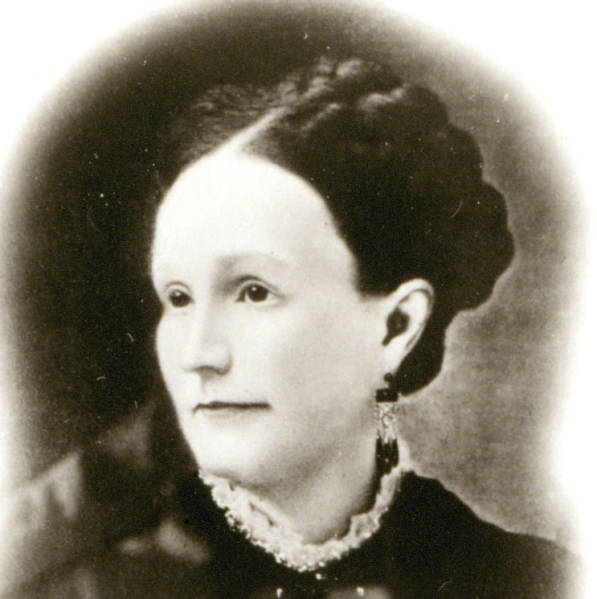
Portrait of Mary Lucretia Creighton
Mary Lucretia Creighton was born Mary Lucretia Wareham in Dayton, Ohio, on February 3, 1834. She married Edward Creighton in 1865 and the couple eventually moved to Omaha, Nebraska. Edward was a successful banker and gave his wife a daily allowance of $25 for her work with the poor (this is approximately equivalent to $675 today!). Mary Lucretia would ride through the poorer parts of Omaha on her carriage pulled by a horse named Billy. She often distributed household items that were needed instead of cash. When Edward Creighton died in 1874, Mary Lucretia used the money she had inherited to carry out his wish to establish what became Creighton University, the first free Catholic college in the United States.
We don’t know for certain that the saddle was Mary Lucretia Creighton, but it was included in a student exhibit on the Creighton family in the 1920s and the exhibit stay up until it was taken down in 1937. According to Creighton University Archivist, David Crawford, during that time, it was mentioned several times in the school newspaper that the saddle belonged to or was used by Mary Lucretia, Sarah Emily Creighton, and other female Creightons. According to one such article, the saddle may have been a gift from Edward Creighton to one of his nieces. Mr. Crawford, however, has not been able to corroborate these claims. After the saddle was removed from exhibit, it was stored in an attic from 1934 to 2007. While no one has been able to confirm that the saddle belonged to Mary Lucretia, it nevertheless represents a compelling chapter in Omaha and Creighton University history.
When Mr. Crawford was hired in 2007, he was alerted by several staff to “the saddle in the attic.” When he was eventually taken up to see it, he describes it as, “It was stuck against the wall, under the rafters, on a broken metal typing table, covered by an old tarp,” as seen in the photo below. As soon as he confirmed that the University Archives could take possession of it, he arranged for it to be brought to the Ford Conservation Center for treatment.
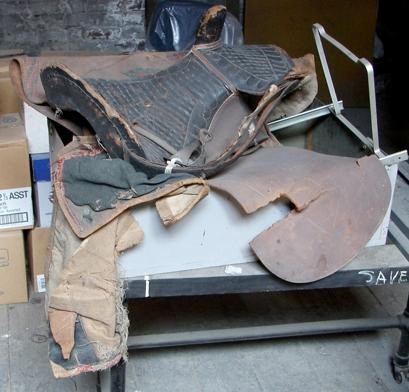
The side-saddle as it was found in the attic.
The Saddle
On the practical side, the saddle is a hoop style side saddle made of a wooden frame, or tree, and covered in vegetable tanned leather. Under the leather are layers of coarse linen, dried plant fiber, and wool padding. The exterior of the seat is covered with black leather that is decorated with simple, straight lines of stitching bordered with scalloped forms.
Under the saddle is a leather and textile saddle pad and a black wool blanket that would have covered the horses flanks on both sides. The off-side, or proper right side of the saddle has a small skirt section of brown leather along with a flap of thicker brown leather that would lie across the horse’s side. The near-side of the saddle also has a small skirt of brown leather that is further enhanced with curved, embossed lines and red and black coloring. The brown leather flap on the near-side of the saddle also has curved vine-like embossed lines and circles with red and black decorative elements.
A Sorry State
Overall, the condition of the saddle was poor. The saddle was structurally unsound, with numerous cracks, splits, tears, and wear holes overall. The saddle’s leather was suffering from red rot, a condition caused by exposure to sulfur dioxide from pollution that causes the pH of the leather to go very low, destroying the collagen network and greatly weakening the leather.
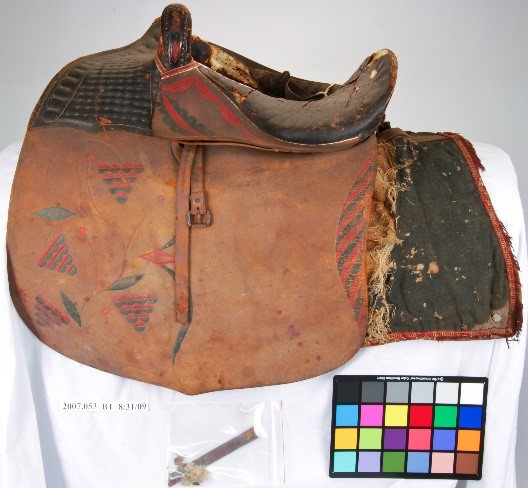
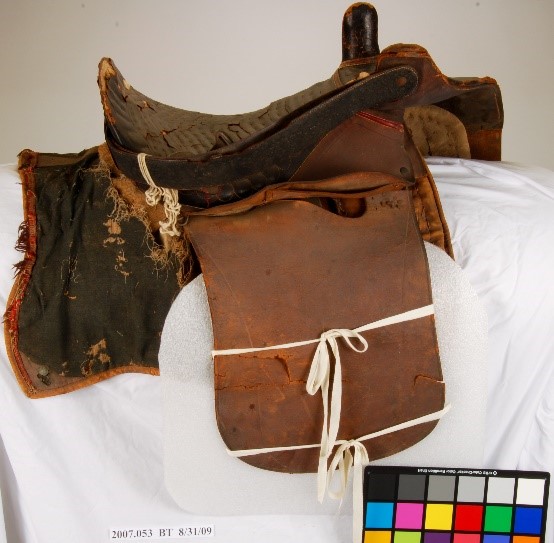
Both sides of the saddle before treatment showing some of the damage
The largest split followed the entire length of the iron hoop. Other large splits and tears zigzagged throughout the seat, and tended to follow along the stitch lines. A large loss in the leather, measuring approximately twelve inches in length, extended along the entire top edge of the cantle (curved part at the back of the saddle seat). Most of the straps and flaps of the saddle were very weak, as evidenced by areas of leather loss, numerous cracks, and tears. The flap on the off-side of the saddle was in the worst shape, with a large, multi-segmented tear that left a four and one-quarter inch by two inch section barely attached to the rest of the flap. There were numerous additional losses to the pommel and seat of the saddle; along with minor abrasions in the leather over the entire surface of the saddle from use and poor storage conditions. There were spots of discoloration on the leather flaps from exposure to various liquids.
Top of the Saddle Seat showing extent of leather loss.
The textile attached to the bottom of the cantle and above the panel was severely frayed with heavy losses. Some evidence of insect infestation was noted when the saddle was brought in, so it was sealed in polyethylene and frozen for two forty-eight hour periods prior to thorough examination. All of the metals associated with the saddle were disfigured with varying levels of surface corrosion. And the surface of the saddle had a heavy layer of soil and dust overall.
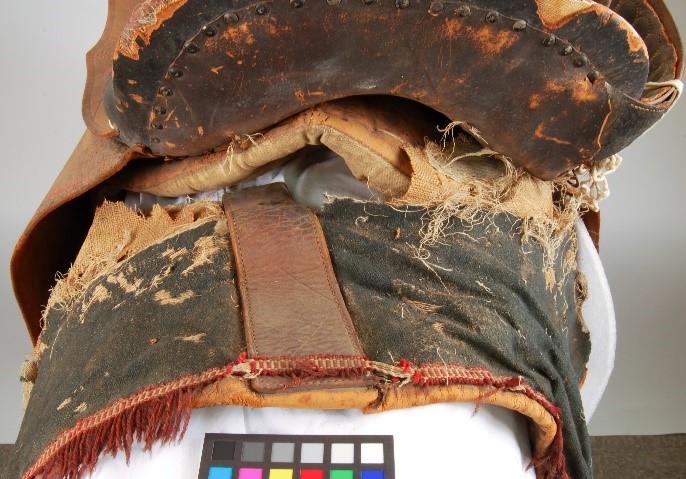
View from the back of the saddle showing the damage to the saddle blanket.
Treatment was proposed in order to improve stability and overall appearance of the saddle so that it could be safely stored or displayed and insure the long-term preservation of this important part of Creighton history.
Check back in February and March to find out what treatment steps were carried out and see the impressive Before and After photos!




